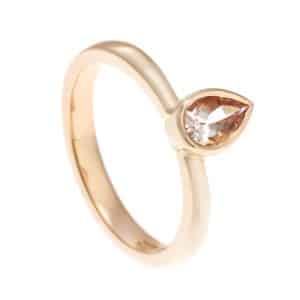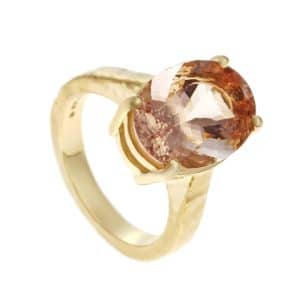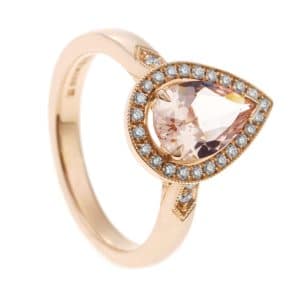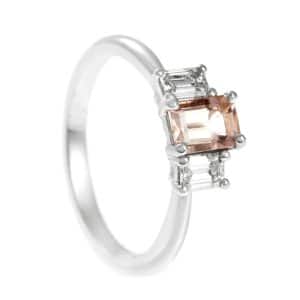Is Morganite Good For Engagement Rings
Designer Chloe spotlights why Morganite is a good stone choice for an engagement ring and how to decide if it's for you.

Finding yourself here means you’re at the point of popping the question (or hinting to your special person for it) and the fabulous morganite is on your radar.
We’re here to tell you some fun facts and offer some valuable design guidance.
All About Morganite
The finest morganite is found in Madagascar, with it also being sourced in other localities such as Italy, Mozambique, Namibia and Zimbabwe. This particular gemstone seems to be trending the last few years, where its famous blush pink/peach hues are proving a delicate alternative to the more vibrant hot pinks as seen in sapphires. It’s a lovely choice particularly for people who feel strong connections to gemstones. Morganite is believed to promote healing, harmony and draw out love to those who wear it- perfect sentiments for entering marriage!
To delve into their properties and suitability in you precious engagement ring, morganite is a 7-8 on the hardness scale. That means it’s not too bad on strength, making it suitable for daily wear. In particular, the hardness also makes it adaptable to be used in any setting.
When it comes to deciding on morganite, the biggest factor is having a clear understanding of the colour. The range of tones are often on the paler side, which dilutes further when the cut is smaller. With this in mind, to see the full potential of colour and sparkle, we recommend really interesting, larger cuts such as pear, oval, princess or cushion:
Although we’d recommend designing around this particular gemstone (because of the depth of colour), if you’re set on a metal colour, you may opt to stone source to match that. In order to colour match properly, and not drain the gemstone’s colour, our designers will offer their guidance. We have plenty of inspiring morganite engagement rings, showcasing all recycled metal colours and Fairtrade possibilities to help too.
Design Tips
So, let us brief you on how your engagement ring could look.
Yellow gold can appear to alter the colour of the morganite, sometimes igniting the peach tones rather than the pink. Rose gold doesn’t drain or change the aspect of gemstone colour, but adds to the softness. Brighter white metals (like platinum, rhodium plated white gold and sterling silver) can frame it. Essentially the crisp tones don’t greatly impact the perception of the colour. On the other hand, 18ct white gold is on the greyer side so can darken the stone. Whereas a 9ct white can add warmth.
So what does this mean?…You have options!
Your Morganite Engagement Ring
And this is where your style and taste is of great importance, as what you choose ultimately depends on your interpretation of peach or pink. Spending time sourcing your ideal colour (and therefore size) is time well spent! You want to achieve the right balance between the pink, peach and pale orange to match your vision. Luckily our gemstone experts will help find your dream colour for your dream design.
What we know for sure, there is a popular pairing when it comes to this gemstone. A diamond, of course! Where the depth of colours are best in these larger cuts, it’s a common choice for morganite to be the focal point. However, uniting it with a diamond creates a dazzling, elegant result. This much is clear across our previous commissioned morganite engagement rings. Its subtle hues are accentuated by the brilliant, iconic white of the diamond. Not forgetting, you hold some of the tradition of diamond engagement rings too.
Irrespective of whether you start with the gemstone or not, depending on the cut and quality of the morganite, your bespoke design will maximise the unique shades. The end result is sure to complement your loved one’s skin tone, style and personality.







